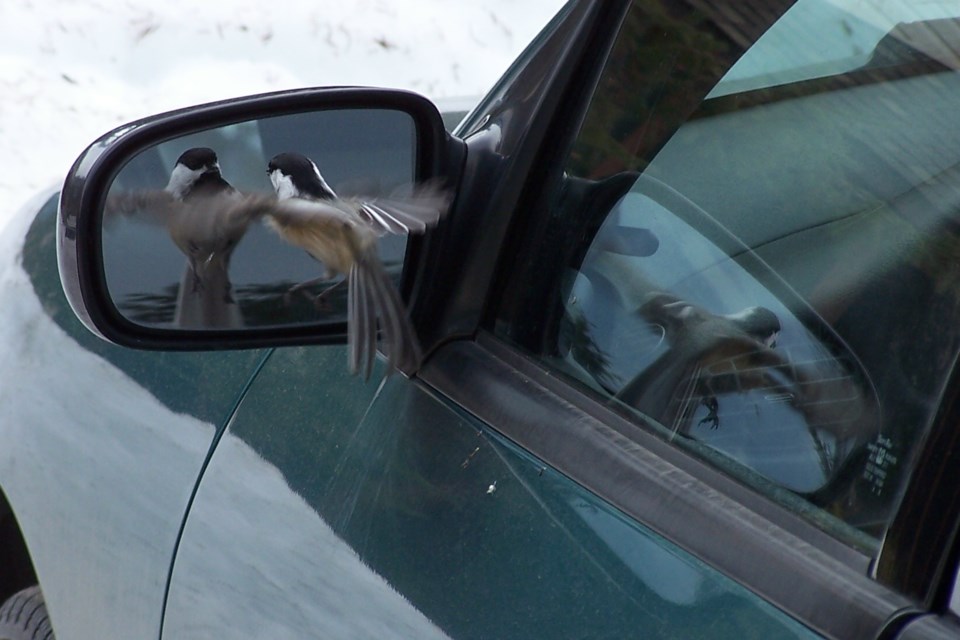Back in 1977, when John Paul Young had his disco hit, Love is in the Air, do you suppose that he was a birdwatcher? Because in the springtime, that is where you'll find the avian antics of love, high above your head in the open air.
Birds seem to regale in courtship displays, using every wile in the book to lure, court and seduce a mate. Brightly coloured feathers, elaborate song, aggressive behaviour and intricate flight manoeuvres — it's all fair in the birdy wooing game.
Each species of bird has, more or less, it's own unique style of courtship. This is good, as chaos would reign if, say, a lady wood duck was love-struck by the beautiful singing of a male song sparrow. Sorry, it's just not going to work in the long haul.
Aerial flights are a tried and true method of impressing the dickens out of a cute co-member of your flock. Several birds are renowned for their spring "look at me" fancy flights, and many are happening right now in our region.
Ravens perform an elaborate sky dance and could easily win in the pairs competition category. Flying together, they mimic each other’s flight, one the mirror of the other as they traverse the open air of the country side. Like a shadow, one will twist, turn, rise and drop with the other, a shared flight of passion and grace.
Harriers (formerly called marsh hawks in the older bird books) are pretty noble looking birds to begin with, the male being silver-grey with jet black accents, and a white patch on his rump. I've seen these birds court above the open fields many times, and the most recent viewing was as exciting as the first time.
Harrier love flights begin with a near vertical fast drop in altitude, coming down at a steep angle towards the ground. At the last possible second, the male pulls out of the dive and uses its speed to 'slingshot' itself skywards in a near vertical climb. When it is almost out of sight (human eyesight that is) the bird rolls on its back and plummets back to Earth, again pulling out of the fall at the height of tall grasses.
What's even more exciting is when the female harrier joins in and the two birds skyrocket together, touch talons and break away into their separate free falls. Don't try this at home kids, these are professionals.
Another species that has birdwatchers scanning the evening sky is the timber-doodle. These birds, more commonly called woodcocks, look like they should be in New Zealand or Australia with all those other loveable weirdos in the world of nature. Their squat body in the shape of a football (although less than half the size of the pigskin), their short legs are mid-frame so they tend to bob forward and back a little, and the beak is, well, rather long, heavy and very out of proportion with the rest of its body. But kind of cute, in a birdie sort a way.
Woodcock spring flights are not only visual, but audible too. Similar in some ways to the harrier, in that the flight is a series of loop-the-loops and spiral climbs and falls, there is the added soundtrack of air whistling through their feathers, a sonic rumble of wings cupping rushing air, and their unmistakable nasal-sounding call of "peent". The call is akin to the human version of "ta-da".
A lady woodcock, like a belle of the deep south, doesn't openly involve herself with such carrying-on, but will coyly let the good ol' boy know that indeedy, she was impressed with all those manly flying techniques. Especially the way he goes "peent" at the end… ooh, that is so attractive in a timber-doodle.
Hawks, being quite at home in the air, tend to have most of their courtship conducted mid-air, with a little stick-sharing back at the old nest site just to cement the deal.
Ducks, on the other hand, rely on sharp colours and aggressive behaviours to claim their fair lady. Several fair ladies, in fact. In fact, the fair ladies may have had several successful suitors by the time a nest is made. Much splashing about and scooting around the water's surface is the domain of waterfowl nuptials.
Of course song birds sing (that’s a good clue as to why they're called 'song birds', I suppose). No daring-do in the air, no bobbing about, just sing yer heart out and hope the gal will flit by your little kingdom and set up residence right here in the underbrush.
One of the other tell-tale signs of newly wed birds is the male’s aggressive behaviour of defining the home territory. Should a Johnny-come-lately show up, there will be much ado as the home bird chases the new suitor far, far away.
Occasionally a particularly aggressive male may succumb to its own vanity… when it sees a reflection of himself in a window pane. Hours of energy will be expended on trying to scare away the refection. I once had a chickadee engaged in a three-day battle with itself in my car’s side mirror.
Robins and cardinals are well known window-combatants, and if their antics are driving you crazy, just tape a piece of cardboard on the outside of your window; they will either go away or go to another window.
Spring is in the air, and love is in the air. Birds do it, bees do it, but birdwatchers tend to just watch and write about it.
